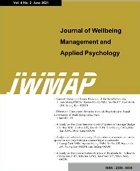- 권한신청
- E-ISSN2586-6036
- KCI
An Analysis of Odors in Traditional Market in Wonju, Gangwon-do
LEE, Woo-Sik (Department of Chemical & Biological Engineering, Gachon University)
JEONG, Tae-Hwan (Unionenv. CO. LTD.)
JUNG, Min-Jae (Department of Environmental Health & Safety, Eulji University)
Abstract
Purpose: As interest in odor increases, odor complaints are also rapidly increasing. Traditional markets are not included in malodor control areas and are not easy to manage, so measure the odor substances generated in traditional markets and analyze the cause of high concentration points. Research design, data and methodology: The average value was presented by continuously measuring the combined odor, TVOC, hydrogen sulfide, and ammonia for 5 minutes at 100m intervals in Joong-ang traditional market, Jayu traditional market, Doraemi traditional market, and Sundae Alley in Wonju, Gangwon-do. In each market, up to the third highest concentration point for each measurement item was marked and analyzed. Results: The Joong-ang traditional market, Doraemi traditional market, and Sundae Alley had high readings at the intersection. The Jayu traditional market had high measurements around restaurants and clothing stores. In addition, the concentration of complex malodors was also high at the points where the hydrogen sulfide concentration was measured. Conclusions: Odor generated in traditional markets is an important indicator for merchants and consumers. Therefore, in future studies, analysis that can supplement the limitations of measurement data and seasonal effects is needed.
- keywords
- Traditional markets, odors, Complex malodors, TVOC, Hydrogen sulfide, Ammonia
- 다운로드 수
- 조회수
- 0KCI 피인용수
- 0WOS 피인용수














